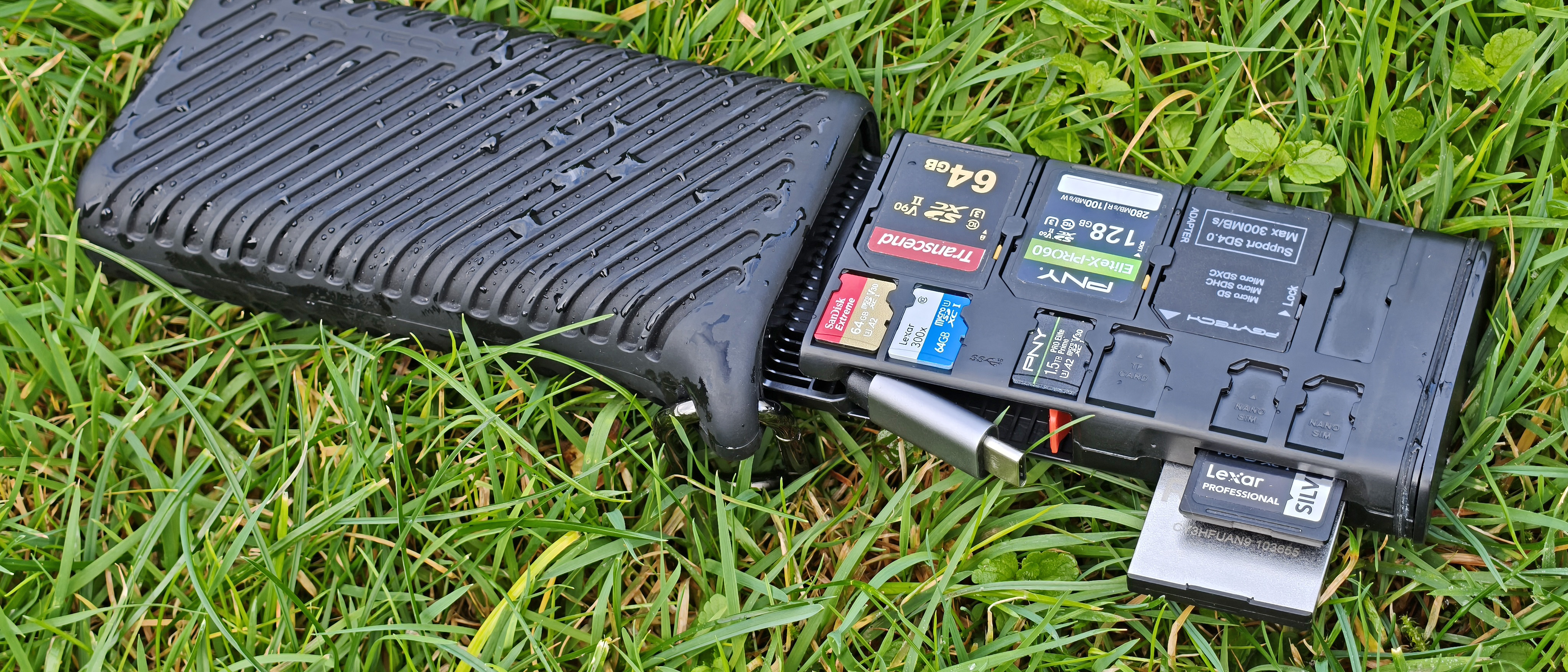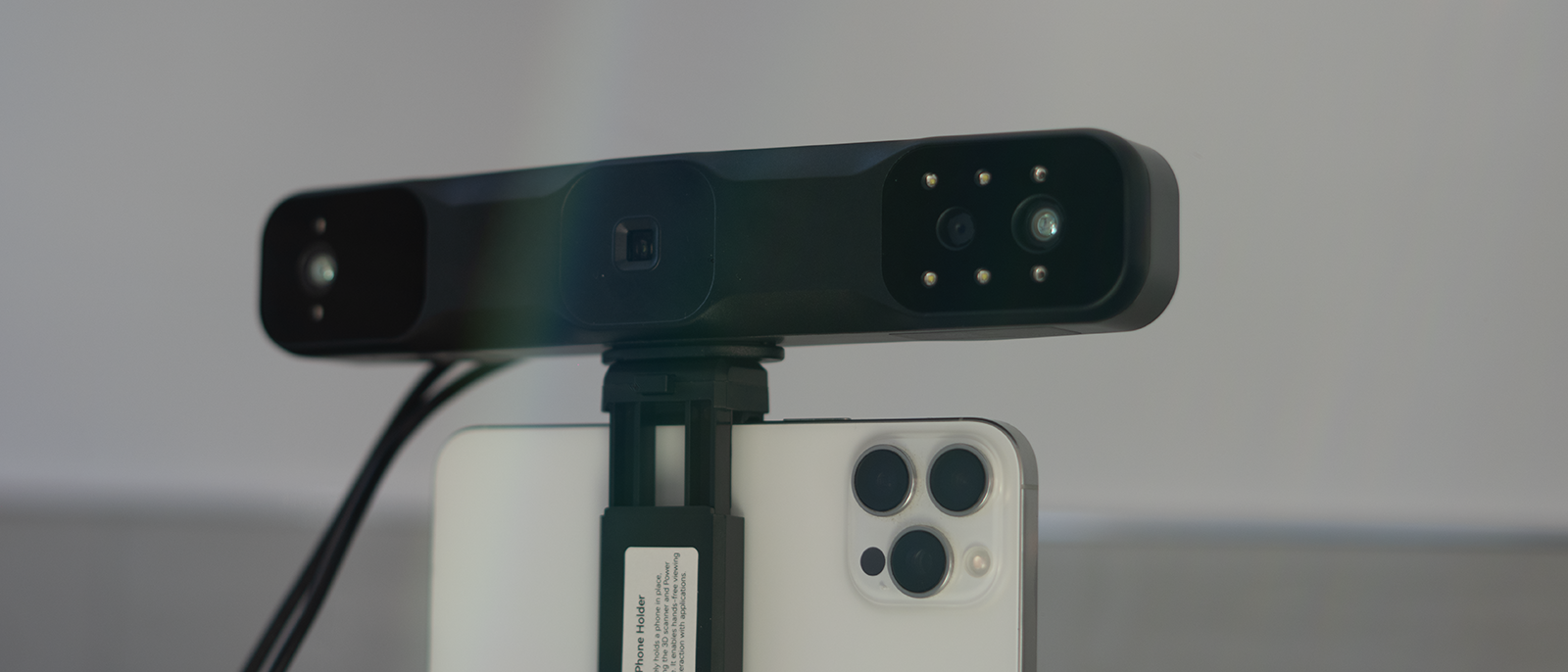Digital Camera World Verdict
Take a CFexpress Type B + SD card reader, add storage space alongside for Type B, SD and microSD cards, then encase the whole thing in a waterproof, shock-resistant shell. That's exactly what you get with the CreateMate, and the result is a genuinely useful all-in-one device that's ideal for creatives who regularly shoot and edit on location. If it had a fast USB4 interface it'd be a perfect product, but even with its slightly slower USB 3.2 Gen 2 connection it's plenty quick enough for most. Factor the fair pricing, which is barely more than many standalone Type B readers, and you've got a very compelling product that's easy to recommend.
Pros
- +
Fast
- +
Quality build
- +
Practical
- +
Well priced
Cons
- -
Could be even faster
- -
Inevitably bulkier than a standalone reader
Why you can trust Digital Camera World
If you regularly shoot and edit on location, you'll likely need to transport a collection of memory cards, along with a card reader. Add in a separate USB cable and, at best, you've got an annoying bundle of clutter. But at worst you could easily lose one element of this critical workflow bundle. That's where the PGYTech CreateMate comes into its own. It's an all-in-one memory card reader and card storage case, which also contains its own built-in USB-C cable. It's even water- and shock-resistant, giving even more peace of mind. Several versions are available to suit different card formats, but here we're testing the CFexpress Type B / SD reader (see our full review of the SD/microSD CreateMate).
A separate but similar version of this CFexpress CreateMate Card Reader Case is also available for those using the smaller Type A CFexpress cards, commonly used on Sony mirrorless cameras.
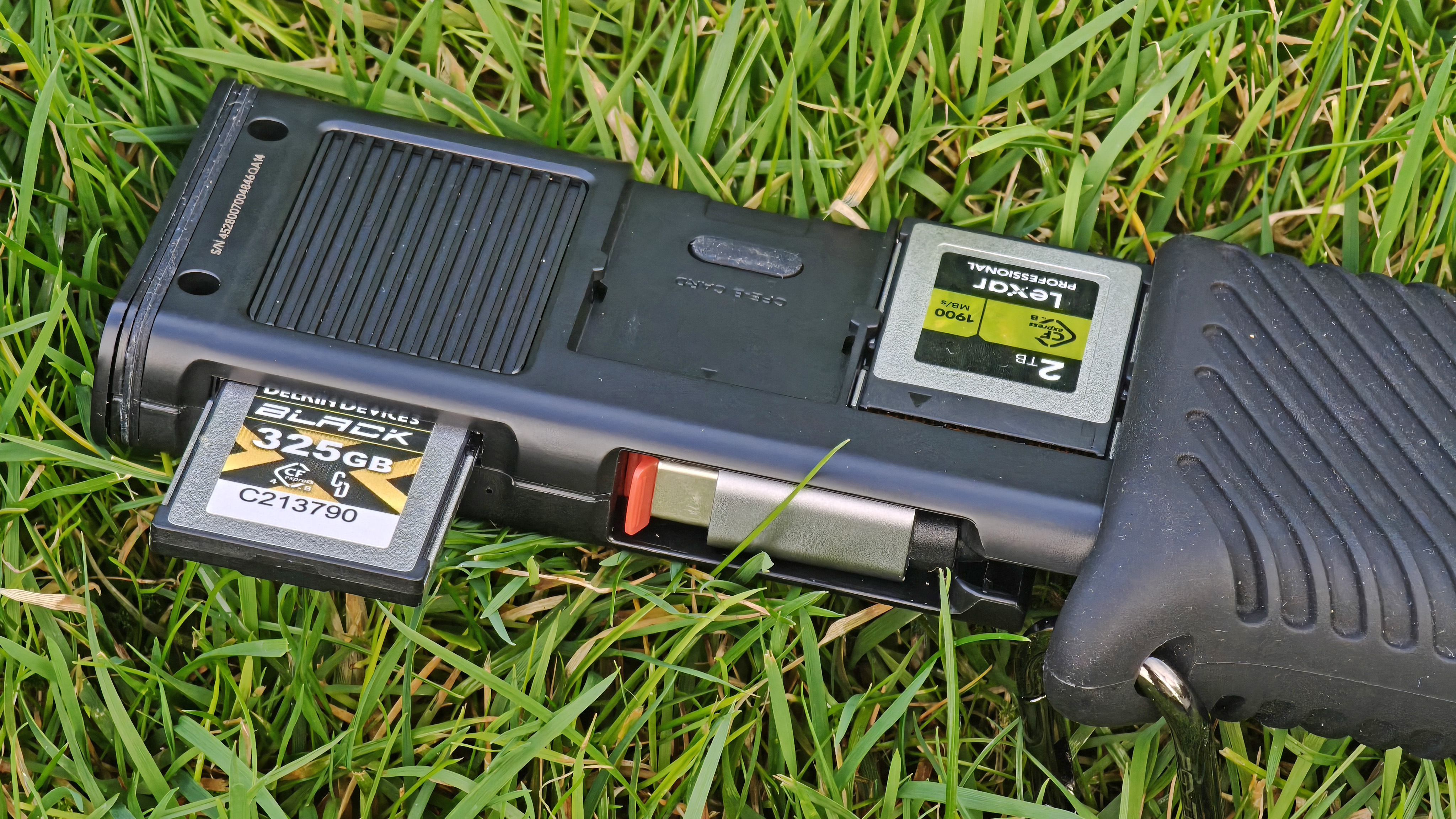
Specifications
Dimensions | 130 x 75 x 27mm (with rubber case included) |
Weight | 198g |
Card compatibility | CFexpress Type B, SD, SDHC, SDXC (UHS-I and II), microSD, microSDHC, microSDXC (UHS-I and II) |
Systems | Windows 7 and above, Mac OS 10.6 and above, Linux, Android, iPad OS. |
Features
In its closed state, the CreateMate is a subtly designed device which effectively hides what lies within. Its soft silicone cover (available in black or Moss Green) provides protection against drops, though it can be removed to reveal a sleek aluminium alloy exterior that'll compliment most laptops. Even without the silicone skin, the CreateMate is IP54-rated against dust and water ingress.
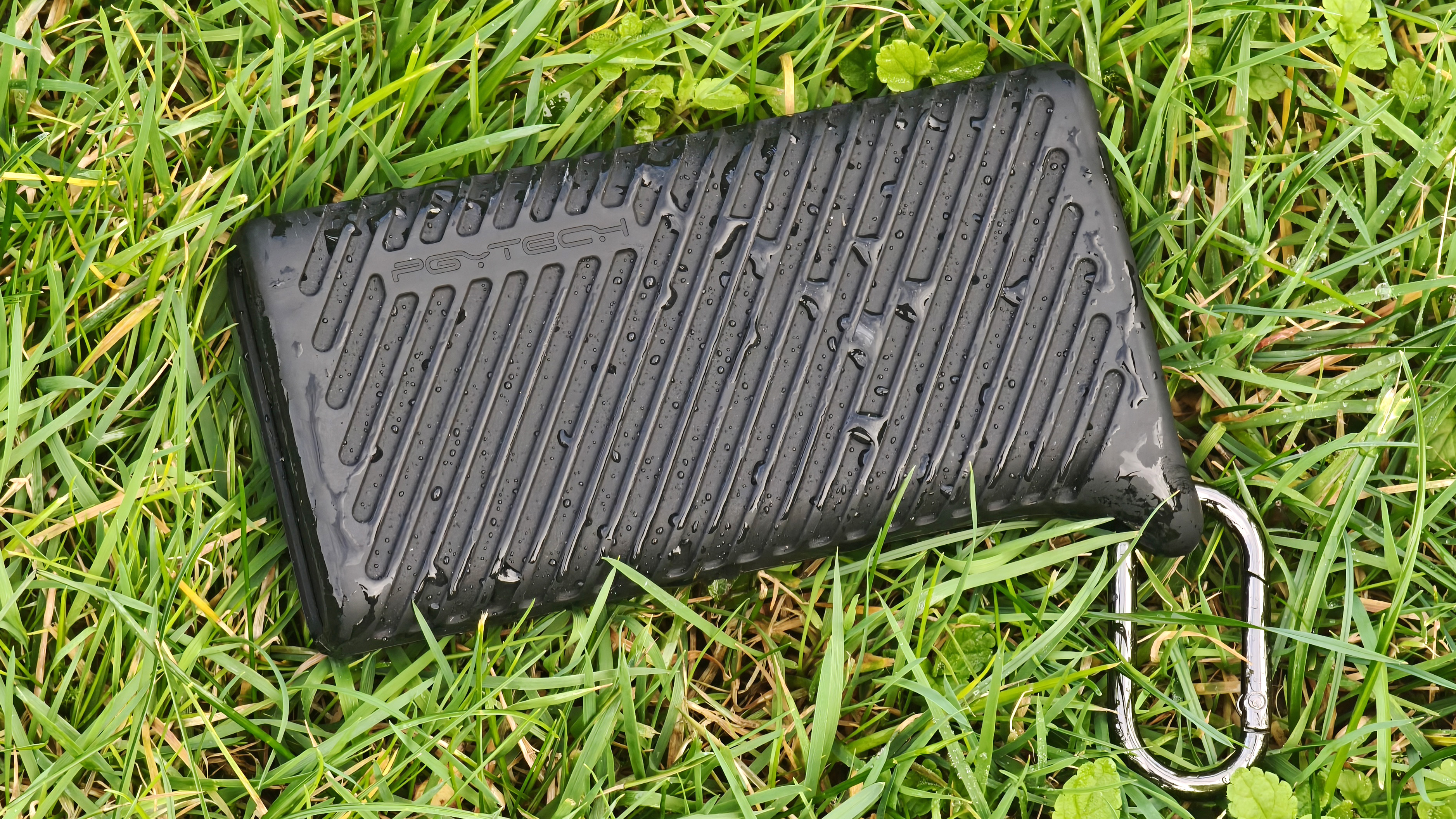
To access your cards and reveal the card reader, simply press on one end and out pops a plastic inner section containing everything you need. The slide action is smooth yet with a reassuring amount of resistance, indicating the ingress protection seals are doing their job. To connect the CreateMate to a computer, you'll need to reveal the short USB-C cable. This is pressed into the edges of the plastic module: pull the small red tab and the end of the USB connector will pop out just enough that you can grip it and then pull the cable out from its recess that runs round the bottom and opposite edge of the device.
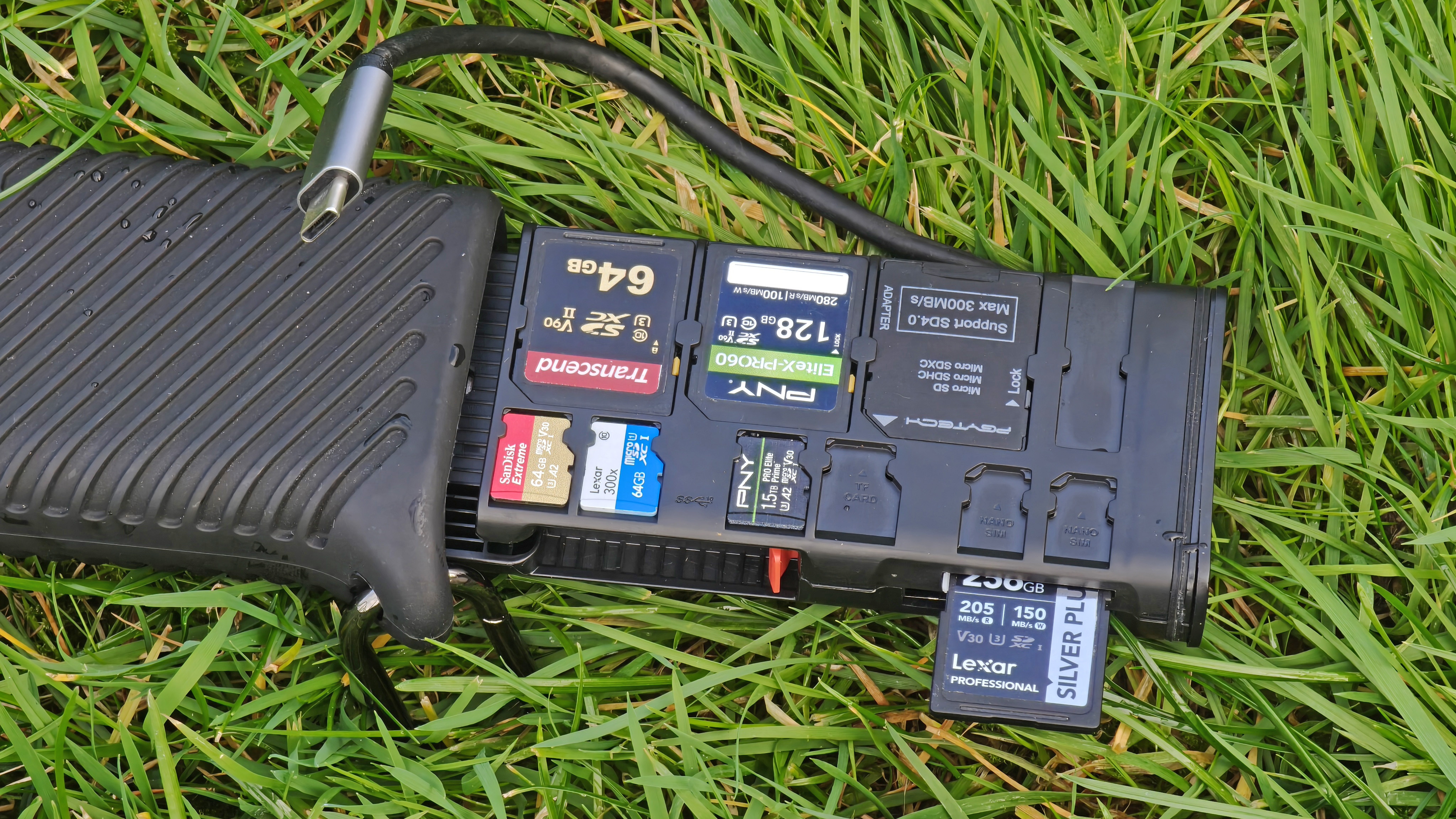
The CreatMate is compatible with Windows, Mac OS, Android and iPad OS - just plug and play - though you will require a Type-C to Type-A adapter to use it with an older computer which lacks Type C ports. The card reader uses a USB 3.2 Gen2 interface, which has a theoretical maximum bus speed of 1250 megabytes per second. In practice that'll be more like 1000MB/s in real-world use, which is significantly faster than a UHS-II SD card, but some way short of the maximum speed of some of the best CFexpress Type B cards, which can reach speeds approaching 4000MB/s. To enable the full speed potential of the latest CFexpress 4.0 cards, you'd need a USB4 or Thunderbolt 3/4 interface, but such card readers are still relatively uncommon, with most manufacturers still utilizing the USB 3.2 Gen 2 standard, like PGYTech.
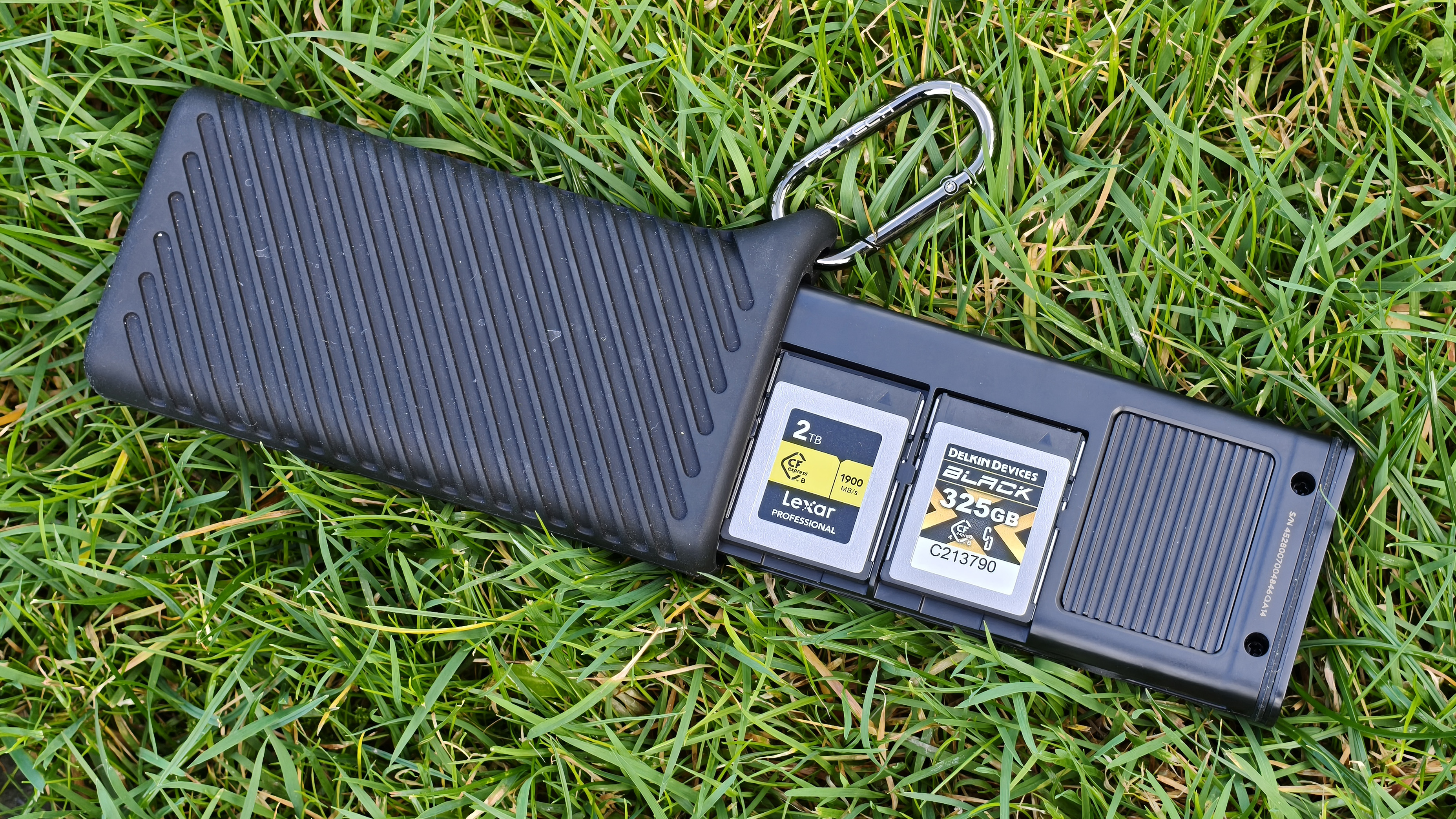
Performance
PGYTech claims the CreateMate should be capable of Type B transfer speeds of up to 1000MB/s, and UHS-II SD / microSD card speeds of up to 312MB/s. To test this, I used the CrystalDiskMark storage benchmarking software, with the CreateMate connected to a USB4 port on a fast laptop. USB4 is 4x faster than USB 3.2 Gen 2, so there should be no bottlenecks when speed testing. My test cards of choice were a Delkin Black CFexpress 4.0 Type B card capable of up to 3530 MB/s read and 3250MB/s write speeds - again, more than enough to max out the CreateMate. I also broke out my fastest SDXC card - a UHS-II V90 card with a maximum rated speed of 285MB/s read and 180MB/s write.
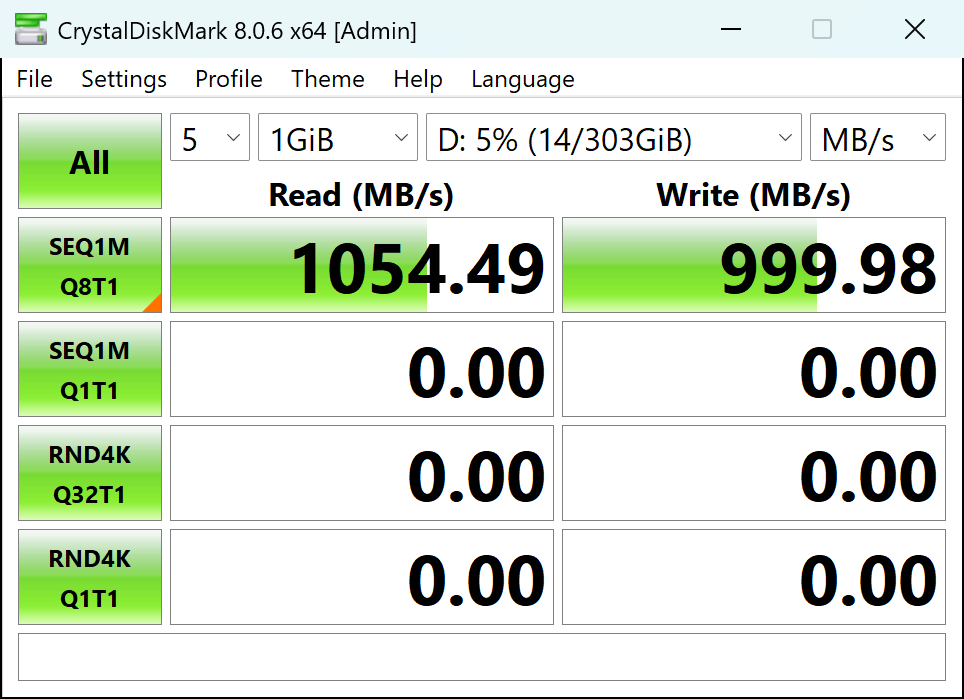
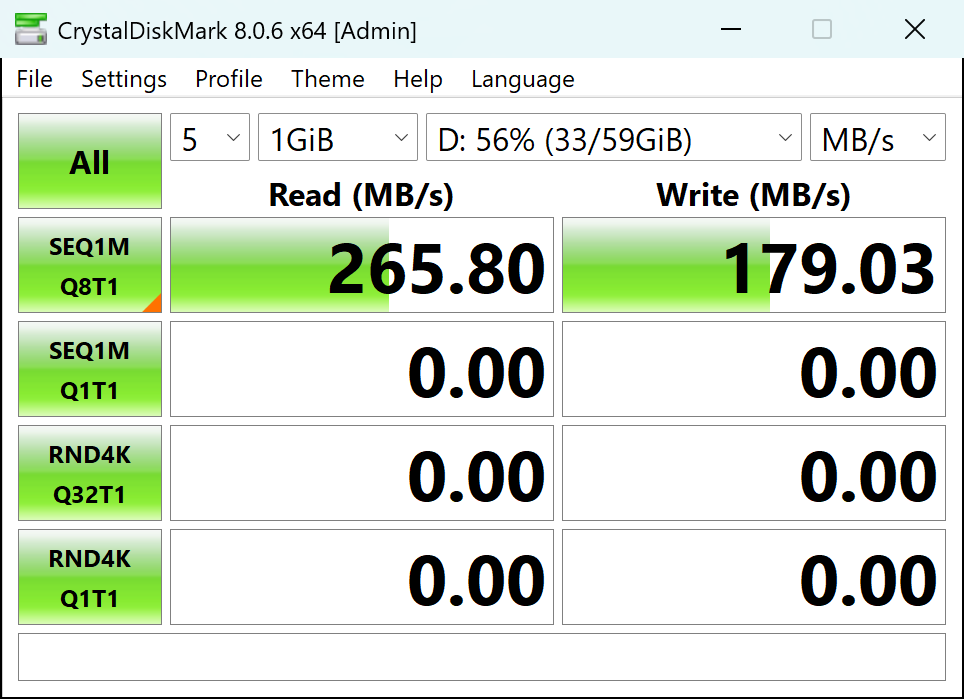
The Type B card performed exactly as expected, being USB-bottlenecked to 1055MB/s read and 1000MB/s write speeds. Switching to the SD card resulted in a maximum read speed of 266MB/s - not far of the card's maximum rated read speed - while the 179MB/s write rate is pretty much exactly what the card should achieve.
The best camera deals, reviews, product advice, and unmissable photography news, direct to your inbox!
Assessing peak transfer speeds using benchmarking software is fine, but there's still no substitute for measuring the speed of actual, real-world file transfers. So I used a 32 gigabyte video file and transferred it to and from the same Type B and SD cards, recording the average and peak read/write speeds for both:
| Row 0 - Cell 0 | Read (peak) | Write (peak) |
CFexpress Type B | 739 MB/s (807 MB/s) | 614 MB/s (629 MB/s) |
SD (UHS II) | 266 MB/s (274MB/s) | 164 MB/s (177 MB/s) |
I'd always expect real-world transfer speeds to be slightly lower than the figures recorded by benchmarking software, but the CreateMate did manage to record some pretty respectable read/write speeds from my test card. SD transfer speeds were equally impressive, exactly matching the results I recorded from the SD/microSD version of the CreateMate, as well as my usual go-to standalone SD card reader from Prograde Digital.
Verdict
I've seen plenty of multi-purpose devices over the years which claim to boost versatility and convenience, but end up being annoyingly compromised. That's not the case here though: the CreateMate is a genuinely useful tool for on-the-go creatives. If you shoot with a high-end camera that has SD and Type B slots, it's ideal, providing both storage space and ingress/drop protection for your precious memory cards. The device itself is reassuringly well made, and I found the card reader to perform as well as it could within the restrictions of the USB 3.2 Gen 2 interface.
It'd be easy to criticise PGYTech for using this USB standard instead of the faster USB4 revision, which could enable the latest CFexpress 4.0 cards to run unconstrained. But the reality is the majority of standalone Type B readers are also USB 3.2 Gen 2, and adopting a quicker revision would likely have increased the CreateMate's price too much. Even with the relatively 'slow' USB 3.2 connection, read speeds of over 800MB/s are not to be sniffed at. Unless you're transferring vast amounts of data on a daily basis, those extra few seconds of transfer time are unlikely to get frustrating. You're more likely to be annoyed by the relatively bulky size of the CreateMate, but that's a necessary side effect of the device's card storage space and water resistance.
Ultimately, if you need an all-in-one card reader and card storage solution that'll survive the demands of daily abuse, the PGYTech CFexpress CreateMate Card Reader Case won't disappoint.
Ben is the Imaging Labs manager, responsible for all the testing on Digital Camera World and across the entire photography portfolio at Future. Whether he's in the lab testing the sharpness of new lenses, the resolution of the latest image sensors, the zoom range of monster bridge cameras or even the latest camera phones, Ben is our go-to guy for technical insight. He's also the team's man-at-arms when it comes to camera bags, filters, memory cards, and all manner of camera accessories – his lab is a bit like the Batcave of photography! With years of experience trialling and testing kit, he's a human encyclopedia of benchmarks when it comes to recommending the best buys.
You must confirm your public display name before commenting
Please logout and then login again, you will then be prompted to enter your display name.
